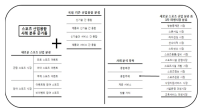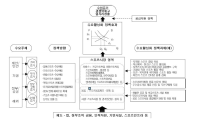
With coming industrial convergence era, there are the necessity of industrial convergence in sport industry. Therefore, the purpose of this study is to provide classification system and trend. This study applied case study method with semi-constructed interview, integrative literature review and observation. In addition, this study provide the conceptual framework for the classification system in sport industry related to industrial convergence. To conclusion, among the several criteria related to industrial convergence for product-new technology criterion, there are virtual sports, diagnosis valuation solution and exercise guide solution for participant sport market. In the case of new technology-service criterion, there are new media and virtual broadcasting for spectator sport market, and u-learning for participant sport market. For product-service criterion, there are complexity of sports facility and sportainment for spectator sport market, and virtual gaming sports and participatory tour for spectator and participant sport market. In addition, the trend of the sport industrial convergence has changed from leading media industry to converging with diverse industry areas.

PURPOSE This study presents policy implications for a Korean sports commission’s introduction and the strategies to realize it. METHODS As an important policy tool, a sports commission system attracts large-scale sports events, revitalizes local economies, and promotes the sports industry’s sustainable development. Such an introduction’s necessity and direction were explored through analysis of overseas cases and interviews with experts. First, the study examined the concept of a sports commission system, along with major overseas cases and derived policy implications to present a model suitable for Korea’s reality. RESULTS Introduction of a sports commission system requires reorganization of legal and administrative systems, strengthening the public-private cooperation model, convergence with the local tourism industry, and customized operation tailored to regional characteristics. In addition, future research directions include evaluating the system’s effectiveness after its introduction, operating customized commissions for each region, and developing sustainable models. CONCLUSIONS The results provide policy guidelines for successful introduction of the Korean sports commission system and can play an important role in establishing a foundation for development of the future sports industry and local economy. Furthermore, establishment of a comprehensive mid-to-long-term plan, including criteria for regional selection, organizational structure, and role distribution, should be prerequisite to introducing the system.

This paper focuses on the analysis of growth policies in the sport industry and the suggestions of the owned demand-pull growth model. The Korean government have enforced the supply-oriented growth policy in the sport industry. However, when the demand for sport is low and inelastic, the supply-oriented growth policy could be less effective. When the supply-oriented growth policy is based on the demand-pull growth policy, the growth policy in the sport industry could be more effective. Concretely, if the government carries out the introduction of sport voucher system, the enlargement of public and private sport facility use, the development of fused policies linked with sport-health-welfare, etc., the sport industry will be advanced more rapidly.

